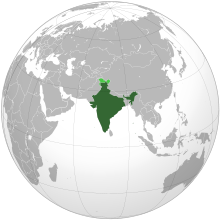India Sets Record With Largest Ever Blackout – OpEd
By Graham Land
Yesterday afternoon, a second wide-scale power outage swept India’s northern, eastern and northeastern grids, resulting in the most severe, widespread blackout the world has ever seen.
More than half the population of the Earth’s second most populous country were affected by the grid failures. 700 million people (about 10% of the world) without power in India absolutely demolishes previous major blackouts around the globe:

In 2005 in Indonesia 100 million were plunged into darkness for around 5 hours. For 18 hours almost all of Italy was without power in 2003, but that was only 55 million people; the “Great Blackout” of 1965 in New York? Please… 25 million only.
Thankfully, the lights are now back on in India. For those who have lights, anyway.
Some may find the current blame game taking place in India confusing, with states blaming other states, local governments blaming national and visa versa, as well as opposition political parties blaming the the ruling Congress party. Meanwhile, in the wake of the blackouts, India’s power minister has been “promoted” to Home Minister.
From the New York Times:
Federal officials initially blamed the northern states of Haryana, Punjab and Uttar Pradesh for taking from the grid far more than their electricity allotments. Part of the reason may be that low rainfall totals have restricted the amount of power delivered by hydroelectric dams, which India relies on for much of its power needs. Another cause may be that drought-stricken farmers are using more power than expected to run water pumps to irrigate their cops.
Some consider the problem a case of supply vs demand – the grids simply can’t keep up. Perhaps “Black Tuesday” is just a growing pain in a massive country with a high economic growth rate. Many industries, companies, apartment complexes and office buildings in India know full well about this problem and therefore generate their own power, but this is not always reliable either.
There has also been criticisms of the functionality of a power grid which is reliant on burning coal. Coal can provide steady electricity production but when demands surge it can’t be ramped up to provide extra power fast, leading to blackouts.
From the Christian Science Monitor:
In the meantime, coal is wreaking havoc on the environment, particularly here in the state of Meghalaya, where regulations simply do not apply. Coal mine owners, who are also politicians, run the state. And in their race to tap India’s coal resources, they are leaving behind a legacy of massive deforestation and water contamination that could have a ripple effect on the environment and health inside the world’s second most-populous country and neighboring Bangladesh.
Add that to horrendous safety conditions for coal miners and you have a power solution with a lot of major flaws.
